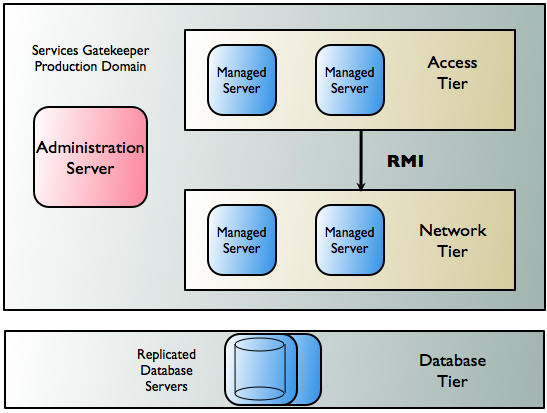What Does “Is Currently Unable to Handle This Request” Mean?
The error message “is currently unable to handle this request” is a common issue faced by users when attempting to access a website or web application. This error is typically indicative of server overload, maintenance, or configuration issues. In essence, the server is currently unable to process and respond to the user’s request due to various reasons, leading to a suboptimal user experience.
Identifying the Root Cause of the Error
The error message “is currently unable to handle this request” can be attributed to various underlying issues, including server overload, insufficient resources, and misconfigured settings. To effectively diagnose and address the problem, it is crucial to utilize tools such as server logs and monitoring software to pinpoint the root cause.
Server overload is a common cause of this error, which occurs when the server receives more requests than it can handle. This situation can arise due to sudden spikes in traffic, inadequate server resources, or poorly optimized database queries. In such cases, it is essential to identify the source of the overload and take appropriate measures to alleviate the strain on the server.
Insufficient resources can also contribute to the error message “is currently unable to handle this request.” This issue can be resolved by upgrading server resources, such as increasing RAM, CPU, or storage capacity. Additionally, optimizing database queries and enabling caching can help improve server performance and reduce the likelihood of encountering this error.
Misconfigured settings can lead to the error message “is currently unable to handle this request” in certain scenarios. Improperly configured web server or database settings can negatively impact server performance and result in this error. Ensuring that server settings are properly tuned can help prevent this error and ensure optimal performance.
Preventing Server Overload and Improving Performance
To prevent server overload and improve overall performance, it is essential to implement best practices and proactive measures. These strategies can help ensure that your server can handle the required load and minimize the occurrence of the error message “is currently unable to handle this request.”
Optimizing database queries is a crucial step in preventing server overload. Slow or inefficient database queries can significantly impact server performance, especially in high-traffic scenarios. By identifying and optimizing these queries, you can reduce the strain on your server and improve overall performance.
Enabling caching is another effective method for preventing server overload and improving performance. Caching allows your server to store frequently accessed data in memory, reducing the need to retrieve the data from the database each time a request is made. This can help improve server response times and reduce the likelihood of encountering the error message “is currently unable to handle this request.”
Upgrading server resources is also an important consideration for preventing server overload. If your server is consistently reaching its capacity, it may be necessary to increase resources such as RAM, CPU, or storage capacity. This can help ensure that your server can handle the required load and maintain optimal performance.
Configuring Server Settings for Optimal Performance
Properly configuring server settings is essential to ensuring optimal performance and minimizing the occurrence of the error message “is currently unable to handle this request.” This section will discuss best practices for tuning web server and database settings, as well as setting up load balancing and failover mechanisms.
Tuning Web Server and Database Settings
Tuning web server and database settings can significantly impact server performance. Here are some recommendations for optimizing these settings:
- Configure appropriate connection limits for your web server and database to prevent overload.
- Optimize buffer sizes and cache settings for your database to improve performance.
- Enable gzip compression on your web server to reduce the amount of data transferred between the server and clients.
- Limit the number of concurrent requests your web server can handle to prevent resource starvation.
Setting Up Load Balancing and Failover Mechanisms
Implementing load balancing and failover mechanisms can help distribute traffic evenly across multiple servers, ensuring high availability and preventing single points of failure. Here are some techniques to consider:
- Load balancing: Distribute incoming traffic across multiple servers using hardware or software-based load balancers. This can help ensure that no single server becomes overloaded and improves overall performance.
- Failover: Set up standby servers that can take over in case of a primary server failure. This can help minimize downtime and ensure smooth operation during maintenance or unexpected outages.
- Clustering: Create a cluster of servers that work together to provide a highly available service. Clustering can help ensure that if one server fails, the others can continue to handle requests without interruption.
- Replication: Replicate data across multiple servers to ensure that it remains available in case of a failure. This can help minimize data loss and ensure that users can still access the information they need during maintenance or outages.
Handling Maintenance and Updates to Prevent Downtime
Regular maintenance and updates are crucial to ensuring smooth operation and preventing the error message “is currently unable to handle this request.” Proper planning and execution can help minimize the impact on users and maintain optimal performance.
Scheduling Maintenance and Updates
Schedule maintenance and updates during periods of low user activity to minimize the impact on users. Communicate any planned downtime to users in advance to set expectations and reduce confusion.
Performing Maintenance and Updates
When performing maintenance and updates, follow these best practices:
- Backup your data before making any changes to ensure that you can quickly recover in case of issues.
- Test updates on a staging environment before applying them to your production servers to identify and resolve any potential issues.
- Monitor server performance during and after updates to ensure that everything is functioning correctly.
- Implement a rollback plan in case the updates cause unexpected issues or conflicts.
Monitoring Server Health
Regularly monitor server health to identify and address potential issues before they become critical. Use monitoring tools to track server performance, resource utilization, and error rates. Set up alerts to notify you of any abnormalities or performance degradation.
Implementing Redundancy and Failover Mechanisms for High Availability
Redundancy and failover mechanisms are crucial for ensuring high availability and preventing the error message “is currently unable to handle this request.” By implementing these techniques, you can minimize downtime, improve system reliability, and maintain optimal performance.
Load Balancing
Load balancing distributes incoming traffic across multiple servers to ensure that no single server becomes overloaded. This technique can help prevent server overload and improve overall performance. Hardware or software-based load balancers can be used to distribute traffic evenly across servers, ensuring high availability and preventing single points of failure.
Clustering
Clustering creates a group of servers that work together to provide a highly available service. If one server fails, the others can continue to handle requests without interruption. Clustering can help ensure high availability, prevent single points of failure, and improve system reliability.
Replication
Replication involves copying data across multiple servers to ensure that it remains available in case of a failure. By replicating data across servers, you can minimize data loss and ensure that users can still access the information they need during maintenance or outages.
Implementing Redundancy and Failover Mechanisms
To implement redundancy and failover mechanisms, follow these best practices:
- Identify critical system components that require high availability and redundancy.
- Choose the appropriate redundancy and failover technique for each component.
- Configure and test the redundancy and failover mechanisms to ensure that they function correctly.
- Monitor system performance and resource utilization to ensure that the redundancy and failover mechanisms are working as expected.
Using Monitoring Tools to Proactively Identify and Resolve Issues
Monitoring tools are essential for identifying and resolving issues before they impact users and trigger the error message “is currently unable to handle this request.” By setting up and configuring monitoring software, you can proactively detect performance issues, errors, and other potential problems, allowing you to take corrective action before they become critical.
Choosing Monitoring Tools
Choose monitoring tools that provide comprehensive visibility into your system’s performance, resource utilization, and error rates. Some popular monitoring tools include:
- Nagios
- Zabbix
- Prometheus
- Datadog
- New Relic
Setting Up and Configuring Monitoring Software
To set up and configure monitoring software, follow these best practices:
- Identify the critical components of your system that require monitoring.
- Configure monitoring software to track performance metrics, resource utilization, and error rates for each component.
- Set up alerts to notify you of any abnormalities or performance degradation.
- Regularly review monitoring data to identify trends and potential issues.
Proactively Identifying and Resolving Issues
By using monitoring tools, you can proactively identify and resolve issues before they impact users. Here are some steps to follow:
- Monitor system performance and resource utilization to ensure that they remain within acceptable limits.
- Track error rates and investigate any spikes or unusual patterns.
- Review monitoring data regularly to identify trends and potential issues.
- Take corrective action as needed, such as optimizing database queries, enabling caching, or upgrading server resources.
Seeking Professional Help for Complex Issues
While many issues related to the error message “is currently unable to handle this request” can be resolved through best practices, optimization, and monitoring, some complex issues may require professional assistance. Seeking help from a qualified consultant or service provider can save you time, reduce downtime, and ensure that the issue is resolved correctly.
Choosing a Qualified Consultant or Service Provider
When choosing a consultant or service provider, consider the following factors:
- Experience: Look for a consultant or service provider with experience in your specific technology stack and industry.
- Reputation: Check online reviews, testimonials, and references to ensure that the consultant or service provider has a good reputation.
- Certifications: Check for relevant certifications, such as those from Microsoft, Amazon Web Services, or Google Cloud Platform.
- Communication: Ensure that the consultant or service provider has good communication skills and can provide clear, concise updates on the progress of the engagement.
What to Expect During the Engagement
During the engagement, expect the following:
- Assessment: The consultant or service provider will assess the issue and provide a detailed analysis of the problem and recommended solutions.
- Planning: The consultant or service provider will work with you to develop a plan to address the issue, including timelines, milestones, and expected outcomes.
- Implementation: The consultant or service provider will implement the solution, testing it thoroughly to ensure that it is working correctly.
- Documentation: The consultant or service provider will provide detailed documentation of the solution, including any changes made to server settings, code, or configurations.
- Follow-up: The consultant or service provider will provide follow-up support and guidance to ensure that the solution continues to work correctly and that any issues are addressed promptly.








